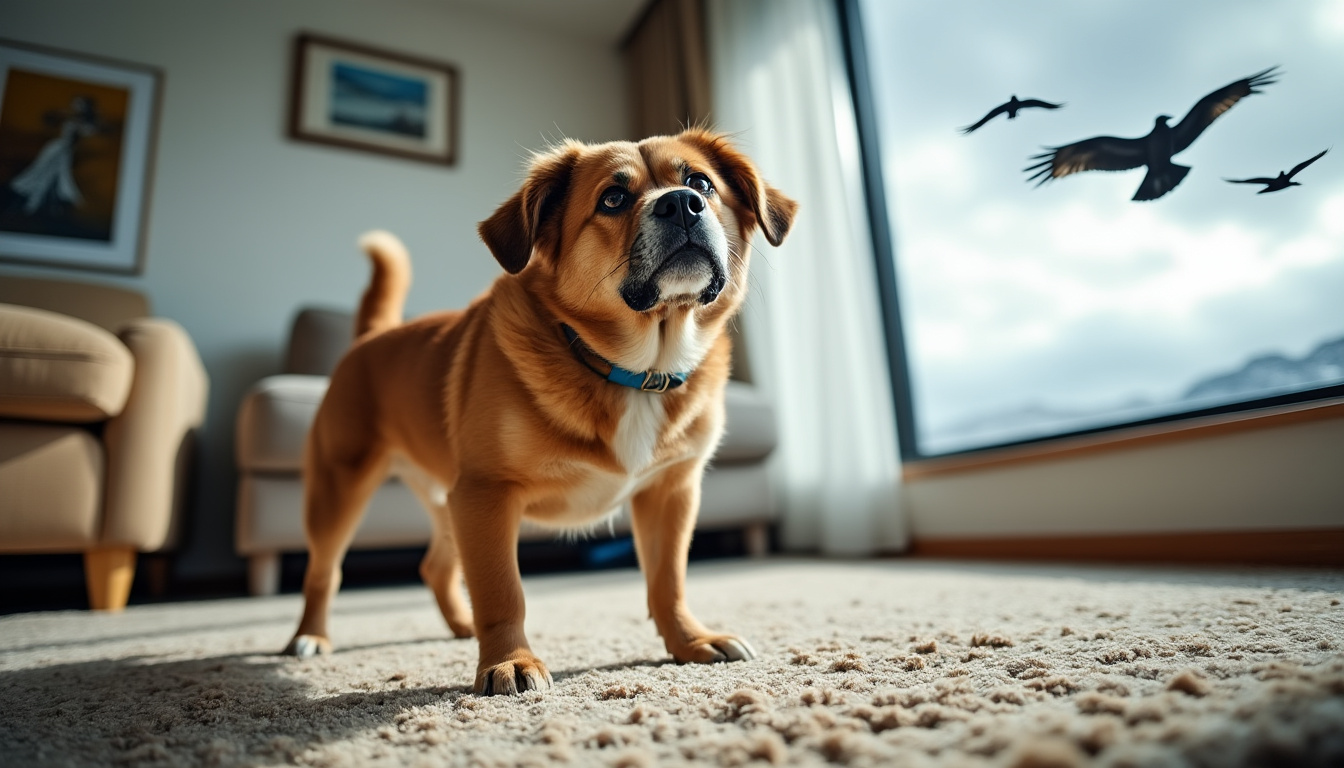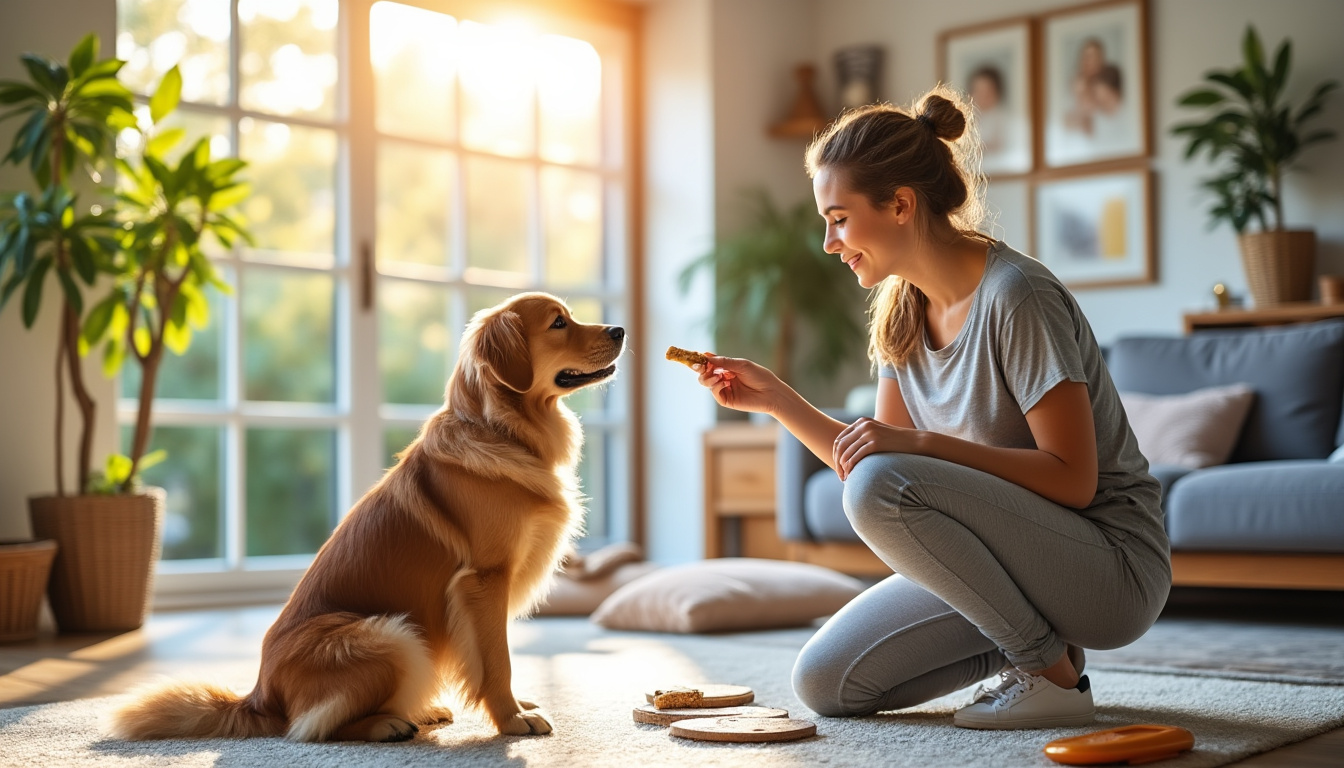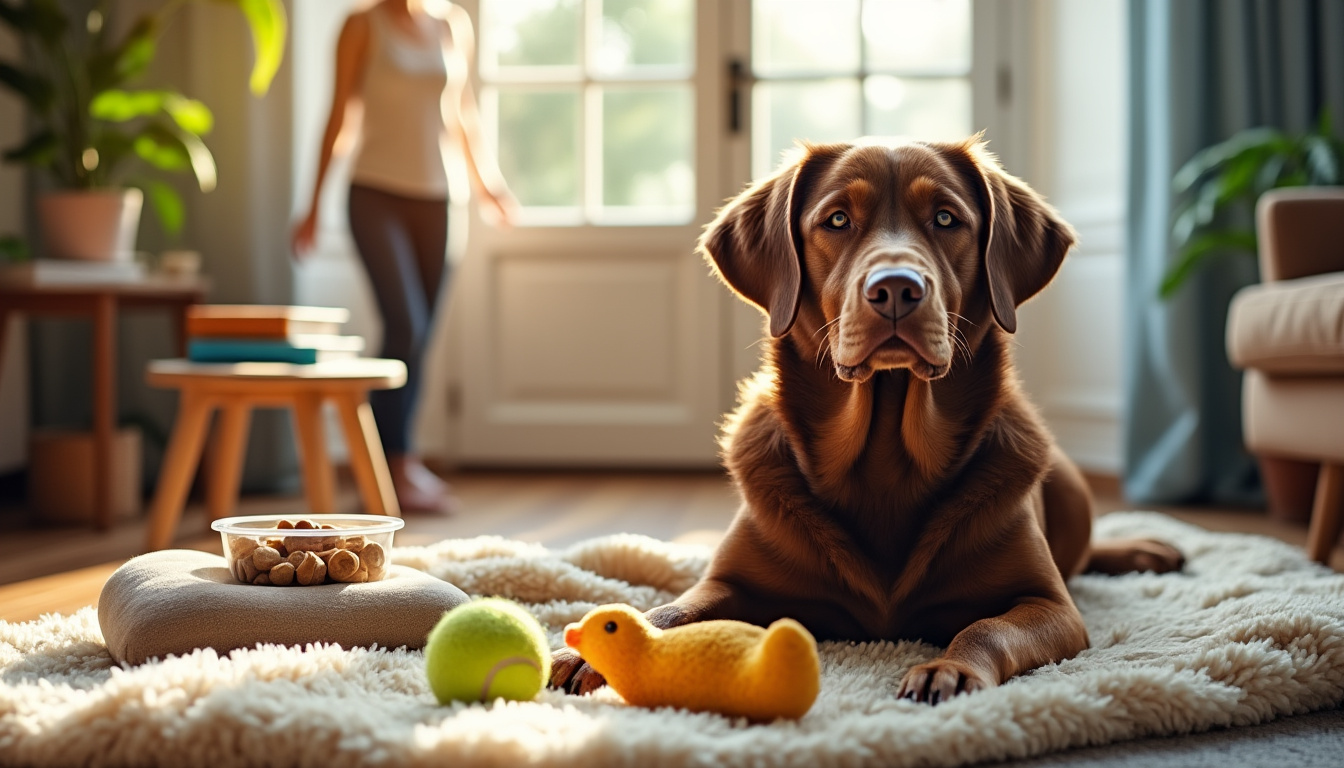Comment to resolve separation anxiety issues in dogs?
The relationship between man and dog is often synonymous with happiness and complicity. However, for some dogs, this connection can turn into a real problem when they suffer from separation anxiety. This disorder affects nearly three-quarters of dogs, leading to undesirable behaviors such as excessive barking, destruction of objects, and accidents indoors. Identifying the causes of this anxiety, recognizing the signs, and implementing suitable solutions are essential steps to improve the well-being of our four-legged companion. This article will explore in depth the various facets of separation anxiety in dogs, while providing practical advice for owners.
Understanding separation anxiety in dogs
To address the issues of separation anxiety in dogs, it is crucial to fully understand this phenomenon. It begins with recognizing that dogs, being social animals, feel distress when their bond with their owner is disrupted. Separation can evoke significant stress, often visible through inappropriate behaviors.

The causes of separation anxiety
Separation anxiety in dogs can result from several factors. Among them, the emotional bond between the owner and the animal can become too strong. Dogs that have not learned to manage solitude during their early age often develop this dependency, which leads to visible distress when left alone. A sudden change in routine, such as moving house or the owner’s prolonged absence, can also be a trigger. Additionally, an adoption at a young age or the loss of a companion animal can reinforce this anxiety.
The signs of separation anxiety
It is essential for owners to closely observe their dog in order to detect the early signs of separation anxiety. Behaviors such as destroying objects, barking or whining excessively may indicate that your dog is not well when left alone. Other signs may include accidents despite house training or self-mutilating behaviors like excessive licking. It is also common for the dog to display unusual behavior in the presence of its owner, such as being clingy or demonstrating palpable anxiety.
Solutions and approaches to combat separation anxiety
After identifying the signs and causes of separation anxiety, it is essential to implement suitable solutions. In this section, we will explore several methods, ranging from training to the use of calming products for dogs.

Training and education
A fundamental approach is to work on the dog’s training. Establishing a routine is crucial to reassure your companion. The predictability of feeding, outing, and activity schedules contributes to improving the dog’s psychological comfort. It is also advisable to train your dog to stay alone gradually. Start with short absences before increasing the duration.
Use of calming products
Many owners turn to calming products for dogs to help manage anxiety. Brands like Calmze and Thundershirt offer specific solutions such as anti-anxiety collars and compression garments that can provide extra comfort to the animal during separation periods.
Interactive toys and distractions
Interactive toys and food puzzles stimulate your dog’s mind while providing an occupation during your absences. These distractions can reduce anxiety by channeling the dog’s energy into a positive activity. Games also help strengthen bonds during reunion times.
Consulting canine behavior professionals
In cases of severe separation anxiety, it may be beneficial to consult a veterinarian or a behaviorist. These experts can offer personalized treatment and tailored advice, whether it’s an adjustment in training or medication in extreme cases. By providing customized solutions, professionals help define an effective action plan to improve your companion’s daily life.
Monitoring behaviors and adjusting your approach
Once the strategies are in place, it is crucial to monitor your dog’s behavior. The tips for dog owners include patience, perseverance, and careful observation of behavioral changes.
Creating a reassuring environment
Transform your dog’s living space into a calming place. Creating a dedicated corner with familiar objects can help reduce stress. A calm environment is essential: reduce ambient noise by closing windows, use blankets or cushions to provide comfort. This helps lower stress levels when you are absent.
Desensitization techniques
An effective method for managing separation anxiety is desensitization. This involves gradually getting the dog used to being alone by progressively increasing the duration of its absences. Start with departures of a few minutes and gradually extend the time. This will awaken its confidence in the possibility of a return and make separation less traumatic.
Tracking progress
Finally, pay attention to your dog’s progress. Note its behaviors, reactions during absences, and upon return home. This will allow you not only to track its development but also to adapt your training methods if necessary.
The stakes of separation anxiety and its impact on daily life
Separation anxiety has significant consequences on the dog’s quality of life, but also on that of its owners. Understanding these stakes is essential for better managing the situation.
The effects on the owner-dog relationship
A dog suffering from separation anxiety can create tension within the relationship with its owner. Excessive behaviors can cause annoyance, leading to conflicts that harm their complicity. By being attentive to the signs of anxiety and implementing solutions, the relationship can be significantly improved.
The impact on family life
Families may also feel the impact of separation anxiety. Many owners avoid being away from home for long periods or abandon vacation plans for fear of leaving their dog alone. This can create a vital family dynamic that could be disrupted by the constant concern for the animal.
The necessity for awareness
The distress of animals can go unnoticed. Raising awareness among those around about the needs and potential issues related to separation anxiety is therefore crucial. Friends, family, and dog daycare services should be informed of your companion’s specifics in order to help establish a serene and secure environment.
Toward harmonious living
With patience, understanding, and suitable solutions, it is possible to overcome separation anxiety problems in dogs. Through these efforts, not only will you improve your companion’s well-being, but you will also strengthen the bond that unites you. Harmony within your home depends on your animal’s thriving, and a healthy relationship is the result of love and mutual respect.




